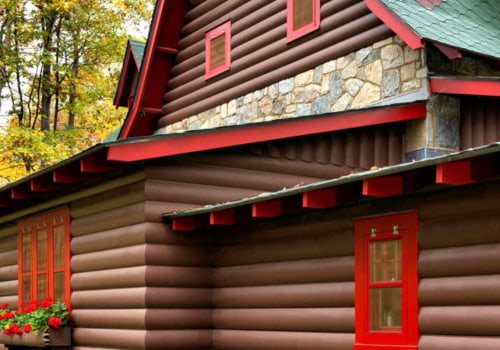The Long-Term Value of Wooden Houses The value of log houses not only remains stable, but often increases A wooden deck is a natural addition to a real log house, and also an addition with the highest resale value of any renovation or add-on. In this category, wood decks with pressure-treated wood recovered 87 percent of their cost for sale, while composite decks recovered 74 percent of their cost. A year ago, we covered the pros and cons of various decking materials. While it's cheaper to build with wood, it also requires more maintenance than composites.
If you plan to keep your home for a long time, a lower maintenance composite deck may be a better option despite its lower resale value. Compared to a conventional wooden stud wall (3½ inch (8.89 cm) of insulation, cladding and wall board, for a total of approximately R-1, the log wall is apparently a much inferior insulation system. Based solely on this, log walls do not meet most code energy standards. To learn about log building code standards for your area, contact your city or county building code officials.
Your state energy office may be able to provide information on recommended or applied energy codes in your state. Rooms make a difference As a general rule, most family-sized homes have 3-4 rooms. This reflects the typical size of a family of two parents and two to three children. Modern families are much more diverse in size and needs, but generally speaking, as the number of rooms increases, so does the value and, most importantly, the number of people who are in the market for that size of housing increase.
Once again, balance is the key, as keeping the number of rooms in line with the total area of the house will maintain value. A trend to highlight is the expansion of the master bedroom. Many log home owners include a spacious master bedroom on the main floor with an en-suite bathroom, ample closet space, and some spa-like treatments, such as a standalone bathtub. Many log houses will have drywall on some of the interior walls to break that shellac from floor to ceiling, yellow look.
Not surprisingly, Boomers and Seniors had their sights set on smaller 1,879 and 1,791 square foot homes, respectively. This generally increases the apparent R-value of a log by 0.1 per inch thick in mild, sunny climates that have a substantial change in temperature from day to night. Some log cabins are even known to resist damage from trees that fall on them during particularly severe storms. For specific laws regarding the construction of a log house, see the US zoning laws and the UK planning permit.
Make the most of your planning and preparation period and find out everything you can before building a log house. Most modern materials are flexible, so as the logs move, the sealant can expand and stretch to maintain a seal Log House Design Options The next part of the design for value is reflected in the actual layout and design of the house. Most homes now use zone heating, which has diminished effects if the barrier walls are not insulated. If you want to build your own log cabin from scratch, it's possible to spend a lot less on your construction, depending on your DIY skills and log availability.
While some enjoy the diversity of a farming community, many more buyers may prefer an area where homes are similar in size, character, and value. I definitely don't want to spend my summers maintaining my second home (I work full time, in the garden, etc.) and no one else in this family knows what end of a hammer to hold. If the logs have any rotting on the surface, you can chisel the rotten part of the log into good solid wood. Even though logs are good natural insulators, don't make the mistake of thinking that you'll automatically have an energy-efficient log cabin.
When this becomes a problem, it is when it is not taken into account and incorrect materials are used that do not allow the logs to sit properly and restrict the movement of the logs. .



